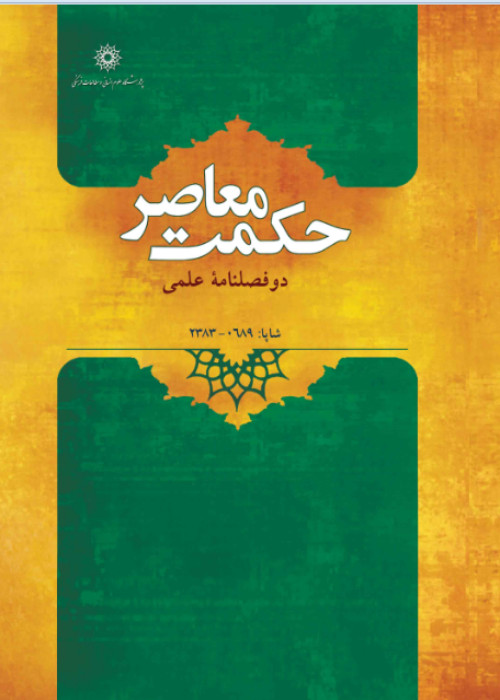Categorize the Farreh-e Izadi and its evolution under the influence of Qur an
Author(s):
Article Type:
Research/Original Article (دارای رتبه معتبر)
Abstract:
Farr/Farreh/Khorreh/Khouarah/Khorneh Is a mythical and mysterious concept in Iranian culture that, during the Islamic era metamorphoses influenced by Quranic concepts and evolves in philosophy of sheikh ishraq. Avesta is the main pre-Islamic source of writing and Shahnama is the most important book about Farr after the Islams conquest. Although many researches had been done about Farr, its concepts, types, characteristics, and shape-shifts are not categorized scientifically up to now. This research aims to recognize through a scientifically shaped classification that which of the nam of God is most effective on Farreh-e Izadi influenced by the holy Quran? So it qualitatively classifies historical finds about Farr and interprets them in a literature-history manner and to prove the parallelism of this concepts the verses of the Quran witnessed. To understand the concepts of Farr, its synonyms are considered first; among the inseparable words, Ourang, Ourand, and Borz have more mythical feature while Varj, Bagh, and Vakhsh besides their mythical bases could be paralyzed with Islamic wisdom. Farr types are Iranian Farr, Pahlavani Farr, Kaiani Farr, Zaratostra Farr, and Mobedi Farr. Farrs features demonstrate that it is a divine gift which is widespread and multifocal, increasable and depressible, loose, combinatory, mysterious, adjuvant, praised, protagonist, bright and inheritable and protective that could bring status legitimation. In its mythical shape-shifts, Farreh-e Izadi could metamorphose to force, live beings, or objects. As a talent or force it appears as beauty, wisdom, or power. It could appear rather as a male or female, spouse or children, animals or plants and might represent as a symbolic element in shape of objects. In Islamic era, Asma-ol Hosna, specially Fazl-e Elahi, Feiz, Rahmat-e Aam/Khass, Vosat-e Elm-e Elahi, and Noor-ol Anvar that are brought from the holy Quran, have evolved and improved the concept of Farr, reducing its features caught from the Sassanian caste, that are to adore Farrahmandan, to inherit Farr, and its noble monarchic glitter.
Keywords:
Language:
Persian
Published:
Journal of Hekmat e Mo'aser, Volume:8 Issue: 25, 2017
Pages:
185 to 225
magiran.com/p1848042
دانلود و مطالعه متن این مقاله با یکی از روشهای زیر امکان پذیر است:
اشتراک شخصی
با عضویت و پرداخت آنلاین حق اشتراک یکساله به مبلغ 1,390,000ريال میتوانید 70 عنوان مطلب دانلود کنید!
اشتراک سازمانی
به کتابخانه دانشگاه یا محل کار خود پیشنهاد کنید تا اشتراک سازمانی این پایگاه را برای دسترسی نامحدود همه کاربران به متن مطالب تهیه نمایند!
توجه!
- حق عضویت دریافتی صرف حمایت از نشریات عضو و نگهداری، تکمیل و توسعه مگیران میشود.
- پرداخت حق اشتراک و دانلود مقالات اجازه بازنشر آن در سایر رسانههای چاپی و دیجیتال را به کاربر نمیدهد.
In order to view content subscription is required
Personal subscription
Subscribe magiran.com for 70 € euros via PayPal and download 70 articles during a year.
Organization subscription
Please contact us to subscribe your university or library for unlimited access!



